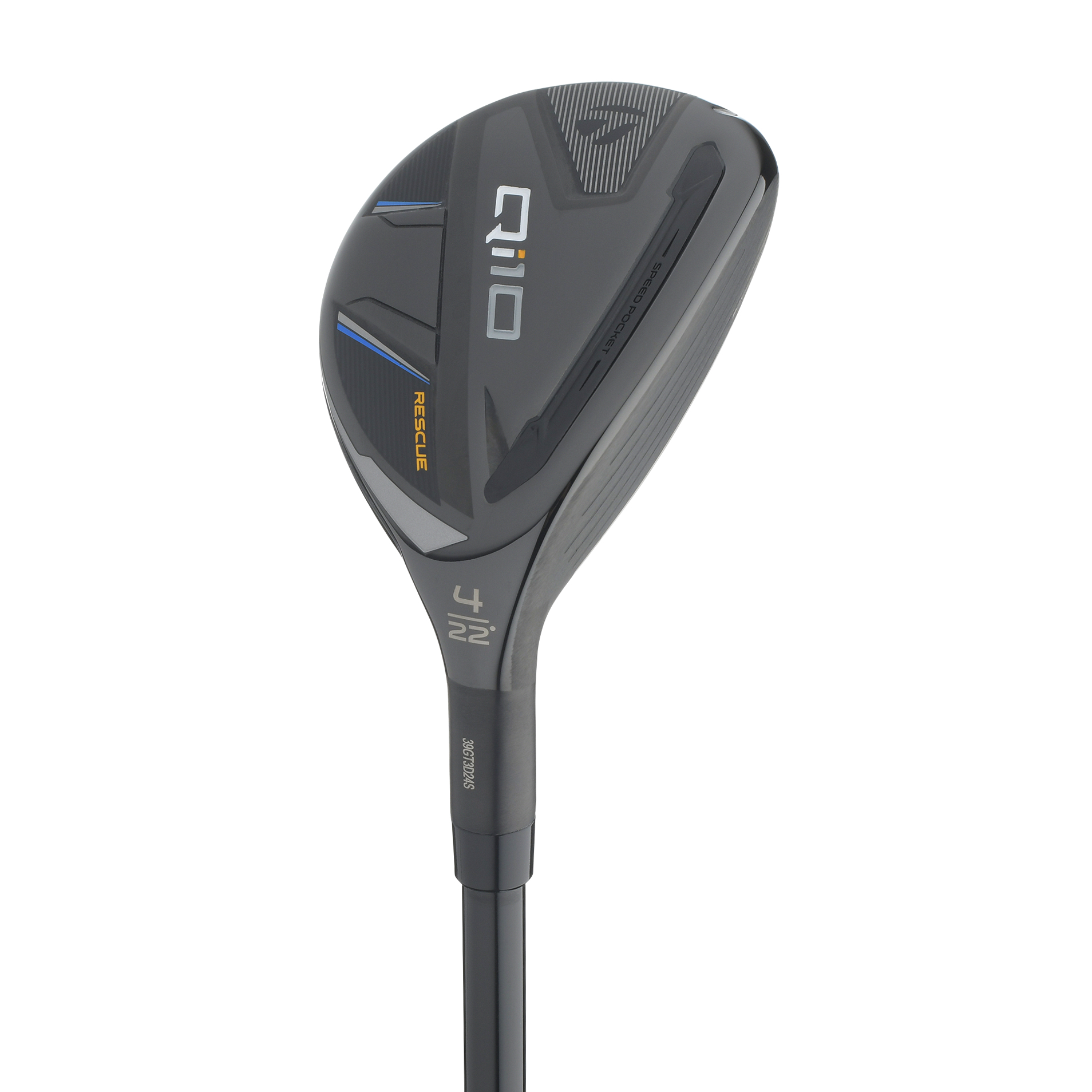Equipment
TaylorMade Qi10 hybrids: What you need to know

WHAT YOU NEED TO KNOW: The TaylorMade Qi10 hybrids feature three different shapes with three distinct kinds of internal weighting to answer the needs of different player types. The range includes the compact Qi10 Tour with a deep face, balanced heel and toe weighting and iron-like feel and performance; the ultra-forgiving, mini fairway wood-shaped Qi10 Max with a lower, deeper center of gravity for forgiveness and higher launch; and the standard Qi10 with a medium face height and internal weighting split between front and back for easier launch with less spin for more distance.
PRICE: $300. Qi10: 19, 22, 24, 29, 33 degrees, with fixed hosel; Qi10 Max: 20, 23, 27, 31, 35 degrees, with fixed hosel; Qi10 Tour: 17, 19.5, 22 degrees, with adjustable hosel +/- 1.5 degrees. Available for pre order Jan. 9, at retail Feb. 2.

Qi10 Max

With a hybrid’s relatively compact size, finding ways to save weight requires imagination. Using carbon composite to stretch the size of the crown, for example, probably matters more in a hybrid than it does on a driver. (The lightweight material replaces steel, which is heavier than the titanium on a driver.) For the Qi10, this means shifting weight to the perimeter to lower the center of gravity for more distance.
3 COOL THINGS
1. Different folks, different strokes. There’s a reason TaylorMade’s hybrid clubs have gone by the name “Rescue” for decades: The name implies a kind of solution for a kind of desperation. What the Qi10 line of hybrids brings is a spectrum of solutions for a spectrum of desperation.

Qi10 Tour
One of the most effective ways of getting at resolving golfers’ challenges with long-iron replacement woes is recognizing not only that different levels of golfers need different kinds of help, but that different kinds of help starts with different kinds of shapes. The three shapes in the Qi10 hybrid lineup range from a confidence-inspiring almost fairway wood in the Qi10 Max to the compact Qi10 Tour, which looks like it’s just the right amount better than the iron it replaces while affording the same kind of workability and shotmaking control this higher level of player prefers.

Qi10
Even the face heights of the three models reflect what the typical player in each category would prefer. That’s why the Qi10 Max, one of the most forgiving hybrid models in any lineup, also features a shallow face design to help players in that category feel more confident that they will get this club in the air as opposed to the low-lofted iron it’s replacing. Meanwhile, the Qi10 Tour targets better players who are only looking for a little help and so it features a compact measurement front to back along with the deeper face, higher squared off toe and straighter leading edge that’s very similar to the long iron it might replace.

Qi10 Tour
2. Weighting game. With three different shapes comes three different approaches to internal weighting, geared to varying levels of forgiveness vs. workability. One big difference between the three models is that the larger Qi10 Max and standard Qi10 feature a weight-saving carbon composite crown that is larger than on last year’s Stealth 2 hybrids. That means more saved weight that is pushed low and to the perimeter to boost forgiveness. Both the Qi10 Max and Qi10 have significantly lower CGs compared to the Qi10 Tour, with the Qi10 Max the lowest. The shallow face design contributes further to that ultra-low CG.

Qi10 Max
Meanwhile, the Qi10 Tour concentrates its internal weighting in the heel and toe to improve distance consistency. Its CG projects higher on the face, which results in a little more spin to accommodate the target player who has the desire to work the ball with a hybrid, said Tomo Bystedt, TaylorMade’s director of product creation for woods.
“The Tour is going to spin a little more, and it’s also tied into the perception of the player,” he said. “That player is going to see a little more onset in this head, and they’re going to feel like they can hit down on it a little bit more. To them, it’s going to come out of there a little lower and that lets them work it a little more.”
3. Speed needs. We all want hybrids that help us hit the ball higher than the long irons they replace. But we also want our new hybrids to go farther than the long irons they replace (because not only can’t we get them in the air, they don’t go very far even when we do). Once again, TaylorMade offers multiple technologies to boost the potential for ball speed and distance in its hybrids.

Qi10
First is the cut-through slot in the front part of sole on all three models. This opening creates space for the thin face to flex better to improve both on-center and off-center hits. Most especially, the slot improves shots impacted the face below the center of the face, just where the majority of golfers make contact the majority of the time.

Qi10 Tour
Also improving ball speed on these low-face impacts is a shift in the positioning of TaylorMade’s proven variable thickness face design. The company calls this shaping “inverted cone technology” in reference to how the face thickness tapers from the center outward, getting thinner at the perimeter. On the Qi10 line, rather than centering it in the face, it’s been shifted downward to create the possibility of more speed on these typical low-face impacts.
Also helping consistency and accuracy, an asymmetrical bulge and roll, known as “twist face,” helps off-center shots stay closer to the target line.



